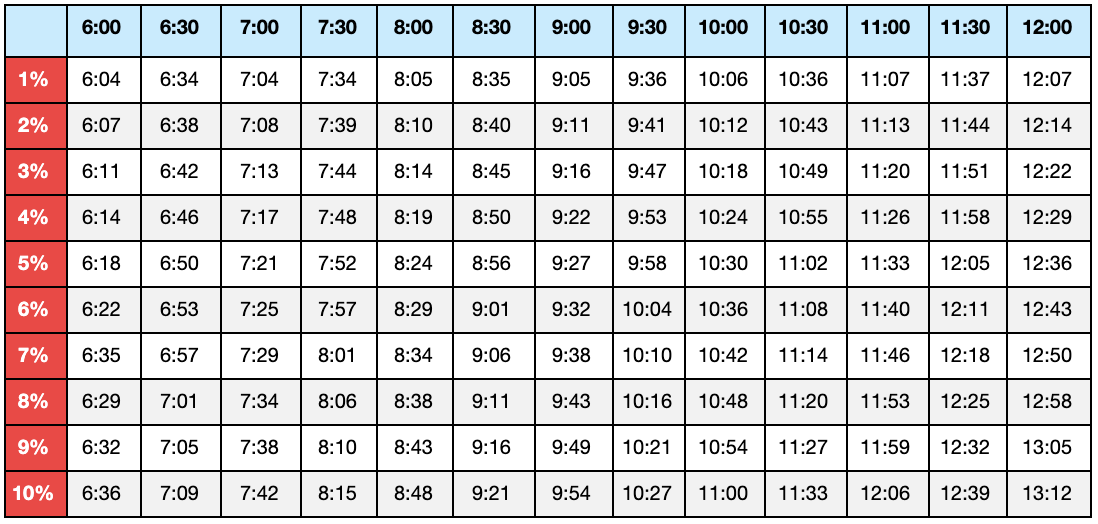HOW TO CALCULATE PACE ADJUSTMENT FOR HOT WEATHER RUNNING
Nelly had it right… It’s gettin’ hot in here! No matter what region of the U.S. you call home, the hotter than normal temps across the country prove challenging in a training season when a PR is on your mind.
When it comes to hot weather running, we need to take more into consideration than temperatures alone to determine how hard to push ourselves towards goal paces. The dew point, or amount of water in the air, is a crucial determinant of how we may feel on any given run.
When the air temperature is high, the human body uses the evaporation of sweat to cool down, with the cooling effect directly related to how fast our sweat evaporates. The rate at which sweat can evaporate depends on how much moisture is in the air and how much moisture the air can hold. If the air is already saturated with moisture, sweat will not evaporate, and the cooling effect will not be achieved. In other words, the higher the dew point, the greater the discomfort… higher than normal heart rates, heavier legs, lightheadedness, headaches, etc.
So, how do you adjust your pace so you can safely train for your next goal time or distance when things heat up? Thanks to Coach Mark Hadley from Maximum Performance Running, there is an easy and accurate way to calculate the exact adjustments to make to your workout paces based on the temperature and dew point at the time of your run.
Calculating Adjusted Pace for Heat and Dew Point
First, add the temperature and the dew point together. (e.g. 80 degrees + 65 dew point = 145). Look up that number in the ranges below to determine the percentage of time you should adjust your pace by.
100 or less: no pace adjustment
101 to 110: 0% to 0.5% pace adjustment
111 to 120: 0.5% to 1.0% pace adjustment
121 to 130: 1.0% to 2.0% pace adjustment
131 to 140: 2.0% to 3.0% pace adjustment
141 to 150: 3.0% to 4.5% pace adjustment
151 to 160: 4.5% to 6.0% pace adjustment
161 to 170: 6.0% to 8.0% pace adjustment
171 to 180: 8.0% to 10.0% pace adjustment
Above 180: hard running not recommended
The calculation is a range, as Coach Mark points out in his Temperature + Dew Point For Pace Adjustments blog, because there are several factors that play into the adjustment (i.e. body size, fitness, physical make-up, level of acclimation to conditions).
Next, find your goal pace in the header row of the chart below, and then the corresponding adjusted pace based on the percentage you just calculated.
So, using this equation, consider this example:
It’s 85 degrees out with a dew point of 68. 85 + 68 = 153. Your marathon training plan calls for an 8-mile tempo run at a pace of 9:00. Based on the ranges above, you should adjust your pace by 4.5 - 6%. Since you are already acclimated to hot and humid conditions, you decide to opt for the lower end of the range - 5%. Using the chart, you can see that your 9:00 minute mile should be adjusted to 9:27 for your tempo run.
It is worth noting, however, that nothing is a better indicator of how hard you should be pushing in extreme conditions than your body. Tune in to what your body is telling you and recognize when it’s time to pull back, or even opt for an indoor track or treadmill workout. You know yourself better than any calculator ever will!
Stay safe and cool!

